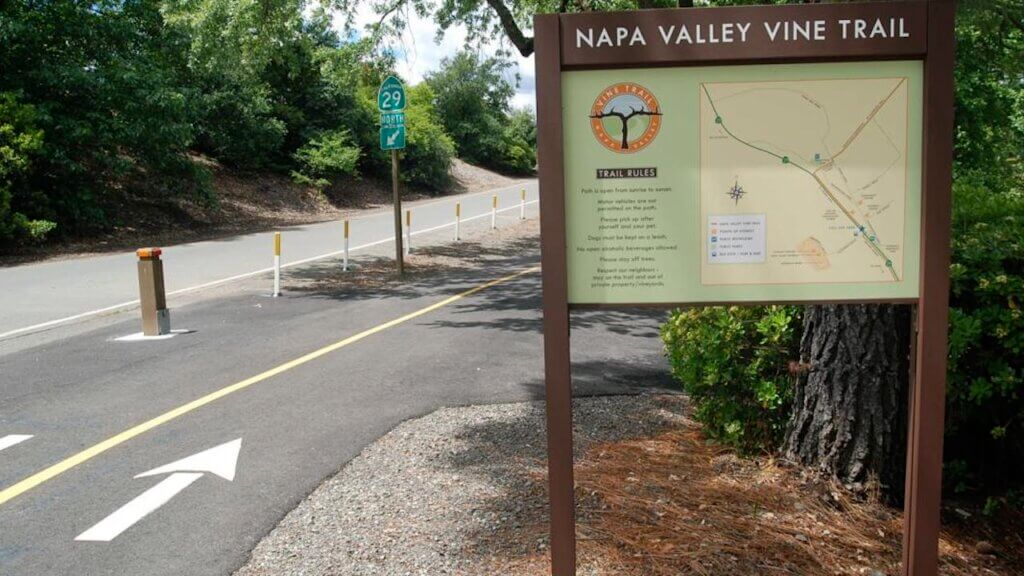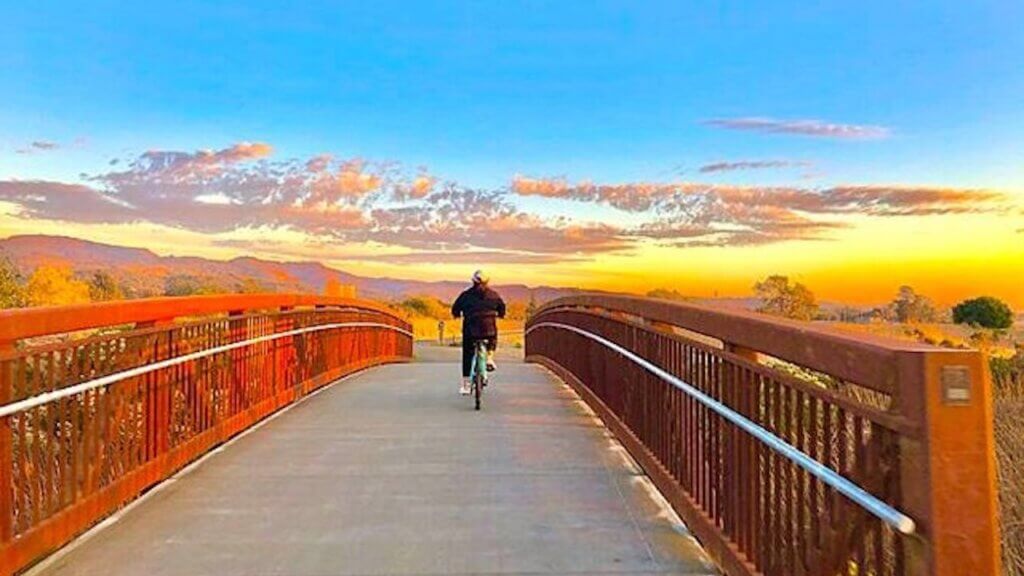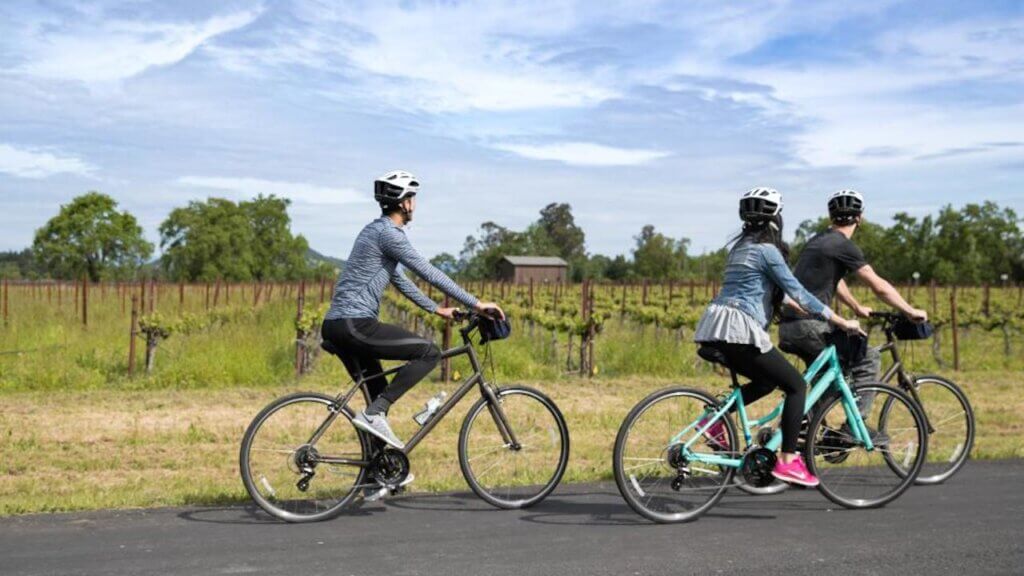Autumn Gear Guide
Find inspiration in our Gear Guide that will keep you out on your bike through wind or rain.
Download NowPicture it: a 47-mile bike trail, smooth and flat, cutting through bucolic farmland. A full 260 sunny days per year, and four seasons of rideable weather. A string of quaint little towns nestled among rolling hills and rows of grape vines. And more than 300 wineries to sample. What is this heavenly place? Tuscany? Catalonia? […]
Picture it: a 47-mile bike trail, smooth and flat, cutting through bucolic farmland. A full 260 sunny days per year, and four seasons of rideable weather. A string of quaint little towns nestled among rolling hills and rows of grape vines. And more than 300 wineries to sample.
What is this heavenly place? Tuscany? Catalonia? Provence? Good guesses.
How about Napa Valley, California.
The project is called the Vine Trail, a non-motorized route that will snake its way across this viticultural mecca. The Vine Trail won’t be finished until at least 2027, but 12.5 continuous miles already exist between the towns of Napa and Yountville, and 15 more miles should be paved and ready within the year.
The idea for the Vine Trail dates back to the early 1990s, when a local vintner named Tom Shelton started brainstorming a multi-use trail. Napa felt like fertile ground, with its pleasant climate and many sporty residents. But to create an unbroken system, trail builders might have to contend with private property; residents assumed that landowners — mostly farmers — would resist. Shelton hit gridlock for more than a decade, but he never gave up on his idea.
Then came Chuck McMinn, a veteran entrepreneur who had helped establish a dozen businesses in Silicon Valley between 1978 and 2000. McMinn and his wife came to own a winery called Vineyard 29, and they settled permanently in Napa in 2004. From there, the couple became invested in the valley’s quality of life. They were avid travelers and liked to explore new places on rented bicycles.

“I had been a bicyclist in Silicon Valley,” recalls McMinn. “But when I moved to Napa Valley, I had no bike.”
McMinn got to know Shelton and learned about his concept for a trail. McMinn also started to talk with other farmers in the region — and learned that, contrary to expectations, a bike trail might garner a lot of support.
“They all thought it was a good idea,” he says.
In many ways, McMinn was exactly the man to get the ball rolling. Effusive and self-motivated, McMinn decided to take on the Vine Trail as a project and to invite community members to collaborate.
“I love startups,” he says. “That’s what I do. I enjoy starting with a blank sheet of paper. There is a lot of power in a grassroots group of people who are willing to come together for a common goal.”

That “grassroots group of people” encompassed a diverse cross-section of Napa residents. Between committees, volunteers, donors, board members, and participating business leaders, the Vine Trail coalition has counted 5,000 active supporters since 2008. McMinn credits its rapid success to public-private collaboration – generous donations from local philanthropists coupled with public infrastructure development.
Unfortunately, Shelton himself lost a long battle with cancer, and he passed away in 2008, at the age of 55. But Shelton died knowing that his dream would, at last, become a reality: A greenway feasibility study was already in the works, and his memorial would serve as a fundraiser, which would collect $60,000 for the Vine Trail.
A major motivation for the trail was State Route 29, also known as the Saint Helena Highway, a scenic motorway that connects Napa’s towns and draws millions of road-trippers each year. But as pleasant as the drive can be, cycling the highway isn’t for the faint of heart.
“Riding on the highway is dangerous,” says Casey-White. “There are always going to be road cyclists who can fly down Silverado Trail at 20 miles per hour. But the Vine Trail is for individuals who are walking 15-minute miles, or a good clip on a bike is 15 miles per hour. The idea of a Class 1 trail is to create shared use, in a safe way, away from traffic. All of a sudden you open up the opportunity to be outdoors to a larger audience.”
That opportunity is being seized: Ridership on the 12.5 existing miles has ballooned 47 per cent since the start of COVID, and the network sustains an estimated half-million riders each year. The Vine Trail has left its mark on the culture as well: Hotels across the valley offer bike rentals or even complimentary bikes to guests. As Casey-White puts it, visitors want to experience Napa “at the terroir level.”
While some critics feared the Vine Trail would become a “drunk trail,” inviting tourists to load up on wine and crash their bikes in the bushes, McMinn says he’s seen “exactly the opposite.” To help travelers appreciate the new trail and all it tethers, the coalition started its “AG RESPECT” campaign. Out-of-towners quickly learn the cultural context of Napa and the rules they should follow while pedaling through rural communities.

Once complete, the 47-mile Vine Trail will become part of a much vaster regional network. Its eventual southernmost point, Vallejo, can be reached by ferry from San Francisco. Cross-country cyclists will one day be able to combine their tour of Napa with the Ridge Trail, a 400-mile ring around the Bay Area. Visitors could spend days or even weeks biking their way through the multi-use trails of Northern California, including Napa.
2027 may seem like a quick turnaround, especially as the Coalition continues to raise funds through grants and private gifts. But Casey-White is pleased with the Coalition’s progress and has faith in its timetable.
“I believe in saying it out loud and believing it will happen,” she says. “This is something you don’t do by yourself. It’s something you do together.”
To learn more about the Napa Valley Vine Trail, see videos and use an interactive map, visit VineTrail.org.
Find inspiration in our Gear Guide that will keep you out on your bike through wind or rain.
Download Now
Leave a comment